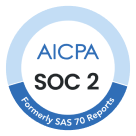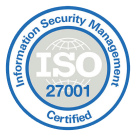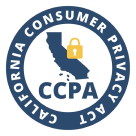Over 61% of businesses have already switched to VoIP for its cost savings and flexibility—but picking the right provider takes more than going digital. Comcast Business VoIP blends traditional reliability with modern tools, but for large-scale outreach, the trade-offs add up fast.
While its reach and bundles work for some, businesses focused on outbound sales or high-volume support should think twice. Long-term contracts, no per-user pricing, and limited transparency can make scaling costly.
This guide breaks down what Comcast Business VoIP really offers, the hidden fees to watch for, and how it stacks up against flexible alternatives like CloudTalk.
Key Takeaways
- Comcast Business VoIP pricing is not publicly listed, making it difficult to predict monthly costs without contacting sales or committing to contracts.
- Many essential features like mobile apps and voicemail transcription require plan upgrades, leading to unexpected add-on costs.
- Comcast’s VoIP services often require bundling with internet, limiting flexibility for businesses that only need voice solutions.
- There is limited automation and no built-in dialer functionality, which may restrict outbound-focused teams or call centers.
- CloudTalk offers a more transparent, all-in-one alternative, with smart dialers, integrations, and upfront pricing built for scale.
Know What You’re Paying For. Know What You’re Getting.
Overview of Comcast Business VoIP Plans and Pricin
Comcast Business offers multiple VoIP solutions designed to support a range of business needs—from basic desk phone lines to enterprise-grade communications across locations.
Unlike providers that list clear tiered pricing, Comcast’s model depends heavily on the service type and requires contacting sales for specific quotes. Plans are generally tied to long-term contracts and may involve bundling with internet or mobile services.
Businesses can choose from Voice Mobility, VoiceEdge, PRI Trunks, and SIP Trunks, each with different capabilities for calling, mobility, and integration. While some plans provide mobile and desktop access, others focus on traditional PBX compatibility or scalability across multiple sites.
Comcast does not publicly list standard pricing, and no free trial is currently offered.
Feature Category
Voice Mobility
VoiceEdge (UCaaS)
PRI Trunks
SIP Trunks
Ideal Use Case
Small teams, up to 24 lines
Multi-site teams, 8+ employees
Businesses with existing PBX
Enterprise-scale, IP-based calling
Calling Features
Unlimited calling, call routing
Voicemail-to-text, conferencing
Caller ID, trunk overflow
Flexible routing, failover
Device Flexibility
Mobile + desk phones
Desktop & mobile apps
Desk phone only
IP PBX systems
CRM/Software Integration
No
Office 365, select integrations
No
Limited, PBX-level only
Per-Minute Charges
Not disclosed
Not disclosed
Not disclosed
Not disclosed
Add-ons Available
Limited
Yes (AI tools, collaboration apps)
No
Yes
Comcast’s service options can support different business sizes and structures, but pricing variability and contract requirements may make it harder for teams to predict monthly costs without a custom quote.
See the Difference. One Demo, All the Answers.
CloudTalk vs. “Comcast Business VoIP” Comparison Table
While Comcast Business offers several phone solutions, most lack upfront pricing, include limited native automation, and require additional infrastructure or service bundles. In contrast, CloudTalk provides a streamlined, cloud-native experience with a full feature set included in clear plans.
Feature
CloudTalk
Comcast Business VoIP
Domestic Calls
500 / 1,000 / Unlimited
Based on plan, worldwide
Unlimited on some plans, details vary by solution
Short Overview of CloudTalk’s Plans and Pricing
CloudTalk has 5 pricing plans on offer, ranging in price from $19 to $50 per user/month, with a special exception for the custom pricing plan, which lets you tailor your solution to your unique business needs. Here’s a breakdown of CloudTalk’s plans:
- Lite: CloudTalk’s special entry-level plan for micro and small businesses in the NA and LATAM. Uniquely quick to deploy, with all the basic calling and call center management tools you need to enter the global market.
Key Features: Unlimited calling in US & Canada, Business SMS, Click-to-Call, Call Recording, Analytics
Price: 19 per user/month) - Starter: CloudTalk’s basic plan is designed specifically for small businesses. Easy to set up and easier to use, this plan offers small teams everything they need to kick off their call center operations.
Key Features: Click-to-Call, Voicemail, Call Flow Designer (CFD), Automatic Call Distribution (ACD)
Price: 25 per user/month - Essential: CloudTalk’s medium plan, focused on growing SMBs and MMBs. This plan helps teams expand their inbound and outbound operations, automate processes, and improve experiences.
Key Features: SMS/MMS, Interactive Voice Response (IVR), Skill-Based Routing, Callback, Integrations + Open API
Price: 29 per user/month - Expert: CloudTalk’s feature-packed plan for growing MMBs and enterprises or any team that requires robust calling capabilities. This plan helps customer-facing departments streamline outreach and improve performance.
Key Features: Power Dialer, Smart Dialer, VIP Queues, WhatsApp Inbound & Outbound Messages, Call Monitoring
Price: 49 per user/month - Custom: CloudTalk’s ultimate plan for the most demanding of companies, tailored perfectly to their particular business needs. This plan allows you to do it all, from coordinating teams to conquering the world’s many markets.
Key Features: Custom Onboarding, Unlimited Outbound Calls with Flat Rates, Enterprise-Level Security, Developer Support
Price: Varies based on features, number of users, etc.
Discover the Future of Conversations
Uncovering Comcast Business VoIP’s Hidden Charges
While Comcast Business VoIP markets itself as a reliable communication solution for growing companies, the true cost can be difficult to pin down. Beyond the base service, there are several fees and requirements that can quietly drive up the monthly bill.
Here are some of the hidden charges and cost considerations businesses should watch for:
- Undisclosed Monthly Pricing
Comcast does not publish standardized VoIP pricing on its website. Most quotes are custom and tied to contracts, which can obscure the actual monthly cost per user. - Contract Commitments
Promotional rates often require 12- or 24-month contracts. Exiting early can result in cancellation fees, and these agreements may also require enrollment in Auto Pay and Paperless Billing. - Equipment and Installation Fees
VoIP service may require rental or purchase of Comcast-approved phones or gateways. Installation charges may also apply—especially for more advanced setups like PRI or SIP Trunks. - Bundling with Internet
In many cases, VoIP service is only available when bundled with Comcast Business Internet. This can inflate the overall package cost for businesses that only need voice. - Add-Ons and Upgrades
Features like readable voicemail, mobile apps, and conferencing tools are only available with higher-tier solutions like VoiceEdge. These often come at a premium and may require additional licensing.
“Comcast Business VoIP” ‘s Best Features
Comcast Business VoIP delivers essential features that help small and mid-sized businesses manage calls reliably.
- 1. Unlimited Nationwide Calling
○ Included in most plans, allowing for unlimited calls within the U.S. and Canada.
○ Useful for teams handling consistent domestic outreach or support.
○ What could be better? International calling is not standard and often adds extra fees. - 2. Mobile & Desktop App Access
○ VoiceEdge offers apps that let users call and receive from their business number on any device.
○ Supports remote work and on-the-go communication.
○ What could be better? App access isn’t included in entry-level plans like Voice Mobility. - 3. Voicemail Transcription
○ Converts voicemails to text and delivers them via email for faster follow-up.
○ Helps professionals manage calls more efficiently.
○ What could be better? Only available with VoiceEdge—requires an upgrade.
“Comcast Business VoIP” add-ons
Comcast Business VoIP offers several add-ons, primarily tied to its VoiceEdge solution. These features enhance core functionality but often come at an additional cost or require plan upgrades.
- Voicemail Transcription – Converts voicemails into readable text and sends them via email for easy access.
- Audio Conferencing – Enables multi-participant conference calls with host controls and scheduling tools.
- Screen Sharing – Included with the desktop app to facilitate remote collaboration during calls.
- Call Forwarding and Hunt Groups – Basic routing tools for distributing incoming calls across departments or teams.
- Mobile & Desktop App Access – Allows employees to make and receive business calls from any device, available only with VoiceEdge.
“Comcast Business VoIP” pros and cons
When assessing Comcast Business VoIP, it’s important to weigh its reliability and accessibility against its limitations in scalability, pricing transparency, and integrations.
“Comcast Business VoIP” vs. CloudTalk: CloudTalk Takes the Lead on Pricing
Opting for Comcast Business VoIP can feel like signing a phone contract in the dark. You get the basics—but once you need mobile access, voicemail transcription, or even simple CRM integration, the hidden fees start stacking up. And without published pricing, it’s tough to know what you’re actually committing to until the bill lands.
CloudTalk does things differently. You get clarity from the start. No bundling requirements, no contract traps, and no nickel-and-diming for features that should already be there. Smart dialers? Included. Automation? Built in. Integrations? Already connected.
Comcast offers voice service. CloudTalk delivers a complete communication platform—built to scale, priced to stay predictable, and designed to empower teams that actually make calls.
Predictable Pricing. Powerful Features. CloudTalk Delivers.
Source:














